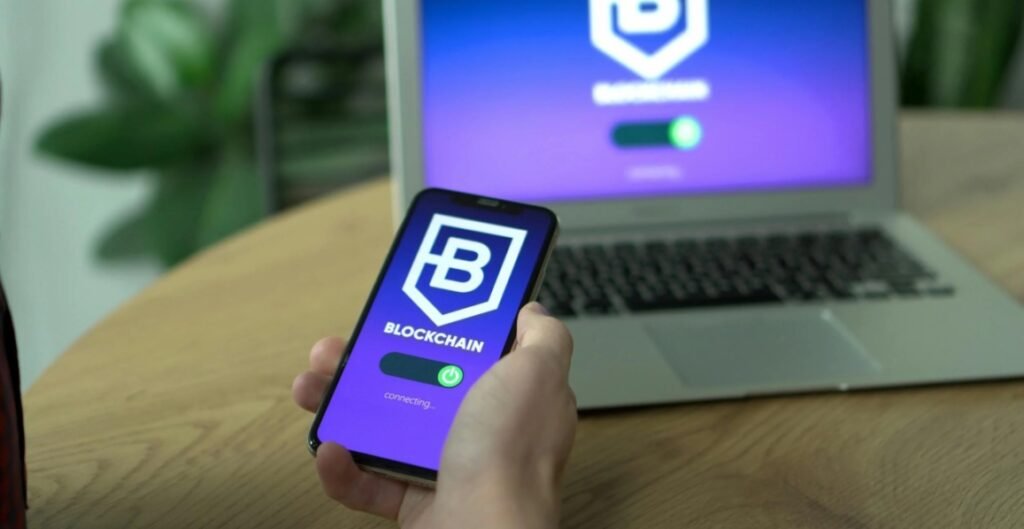How Does the Mobile Wallet Market Work

In today’s digital economy, mobile wallets have evolved from a convenient payment option to a transformative financial ecosystem. As cash usage declines and smartphone penetration increases, understanding how the mobile wallet market functions has become essential for consumers, businesses, and investors alike. This comprehensive guide explores the intricate workings of the mobile wallet market, its key players, revenue models, and future trajectory.
Understanding Mobile Wallet Technology and Infrastructure
What Exactly Is a Mobile Wallet?
A mobile wallet is a digital application that securely stores payment information, loyalty cards, tickets, and other financial instruments on a smartphone or wearable device. Unlike physical wallets, mobile wallets encrypt sensitive data and utilize various authentication methods to ensure secure transactions.
These digital payment solutions typically fall into three main categories:
- Closed Wallets: Operated by specific merchants for exclusive use within their ecosystem (Amazon Pay, Starbucks)
- Semi-Closed Wallets: Accepted by multiple merchants who have partnered with the wallet provider (PayPal)
- Open Wallets: Connected directly to bank accounts and usable anywhere accepting digital payments (Apple Pay, Google Pay)
The Technology Powering Mobile Wallet Transactions
Mobile wallet transactions rely on several key technologies to function securely and efficiently:
Near Field Communication (NFC)
NFC technology enables contactless payments by allowing devices to communicate when placed within close proximity (typically 4cm or less). This secure, short-range wireless connectivity powers tap-to-pay functionality in mobile wallets like Apple Pay, Google Pay, and Samsung Pay.
QR Code Systems
QR code-based mobile wallets generate unique codes that merchants scan to process payments. This technology is particularly prevalent in markets like China (WeChat Pay, Alipay) and India (Paytm), where QR code infrastructure was faster to implement than NFC terminals.
Magnetic Secure Transmission (MST)
Pioneered by Samsung Pay, MST technology generates a magnetic signal that mimics the magnetic stripe on traditional payment cards. This allows mobile wallet payments at terminals that haven’t been upgraded to support NFC, significantly expanding acceptance points.
Tokenization and Encryption
Mobile wallets use tokenization to replace sensitive card details with randomly generated tokens during transactions. This critical security feature ensures that actual card numbers are never shared with merchants, dramatically reducing fraud risks.
According to a comprehensive report by Allied Market Research, the global mobile wallet market was valued at $1.04 trillion in 2019 and is projected to reach $7.58 trillion by 2027, growing at a CAGR of 28.2% from 2020 to 2027.
Key Players in the Mobile Wallet Ecosystem
Mobile Wallet Providers
The mobile wallet market features several types of providers competing for market share:
Tech Giants
Companies like Apple, Google, and Samsung leverage their device ecosystems to promote their wallet solutions. These players benefit from enormous user bases, deep integration with hardware, and established trust.
Financial Institutions
Traditional banks and credit card issuers have developed their own wallet solutions to maintain relevance in the digital payment landscape. Examples include Chase Pay and Wells Fargo Wallet.
Fintech Specialists
Dedicated fintech companies focus exclusively on payment solutions, often targeting specific markets or use cases. PayPal, Venmo, Cash App, and Revolut exemplify this category.
Retailers and Service Providers
Major retailers and service companies have created proprietary wallet solutions to enhance customer loyalty and capture transaction data. Starbucks, Walmart Pay, and Amazon Pay represent successful implementations of this approach.
Payment Networks and Processors
Behind every mobile wallet transaction lies a complex network of payment processors and networks:
- Card Networks: Visa, Mastercard, American Express, and Discover provide the rails for processing transactions
- Payment Processors: Companies like Stripe, Adyen, and Worldpay facilitate the actual movement of funds
- Banking Partners: Financial institutions that hold funds and issue payment credentials
Merchants and Point-of-Sale Systems
Merchants play a crucial role in the mobile wallet ecosystem by:
- Implementing compatible point-of-sale systems
- Training staff on mobile payment acceptance
- Integrating loyalty programs with wallet solutions
- Promoting mobile wallet usage through incentives
How Mobile Wallet Transactions Work: The Technical Process
The Mobile Wallet Transaction Flow
Understanding the technical process behind mobile wallet transactions reveals the complexity of these seemingly instantaneous payments:
- Wallet Setup: Users register their payment cards or bank accounts within the mobile wallet application
- Tokenization: The wallet provider generates secure tokens representing payment credentials
- Transaction Initiation: User authenticates (via fingerprint, facial recognition, or PIN) and presents device to payment terminal
- Data Transmission: Payment data transfers via NFC, QR code, or MST technology
- Processing: The merchant’s payment processor receives the tokenized payment information
- Authentication: The payment network validates the transaction details
- Authorization: The issuing bank approves or declines the transaction
- Confirmation: All parties receive transaction confirmation
- Settlement: Funds transfer from the customer’s account to the merchant’s account (typically within 24-48 hours)
This entire process typically completes in seconds, providing a seamless user experience despite the complex infrastructure working behind the scenes.
Security Measures in Mobile Wallet Transactions
Mobile wallet providers implement multiple layers of security to protect sensitive financial information:
- Device-Level Security: Biometric authentication, device passcodes, and secure elements
- Tokenization: Replacement of actual card numbers with randomly generated tokens
- End-to-End Encryption: Secure data transmission throughout the transaction process
- Fraud Detection Systems: AI-powered monitoring for suspicious activity
- Remote Deactivation: Ability to disable wallet functionality if a device is lost or stolen
Mobile Wallet Market Business Models and Revenue Streams
How Mobile Wallet Providers Generate Revenue
Mobile wallet providers employ various business models to monetize their services:
Transaction Fees
Many wallet providers charge merchants a percentage of each transaction processed through their platform. These fees typically range from 1-3% depending on the provider and transaction volume.
Data Monetization
User transaction data provides valuable insights into consumer behavior, which some wallet providers monetize through targeted advertising or by selling anonymized data to third parties.
Cross-Selling Financial Products
Mobile wallets often serve as gateways to additional financial services such as loans, insurance, and investment products, generating revenue through commissions or interest.
Subscription Models
Some mobile wallet providers offer premium tiers with enhanced features such as higher transaction limits, advanced analytics, or dedicated customer support.
Float Income
Wallet providers earn interest on user funds held in accounts before they’re spent (particularly relevant for closed and semi-closed wallet systems).
Merchant Benefits and Costs
From the merchant perspective, accepting mobile wallet payments involves both benefits and costs:
Benefits:
- Faster transaction processing
- Reduced cash handling costs
- Enhanced customer data collection
- Increased average transaction values
- Reduced fraud risks
Costs:
- Transaction fees (typically 1-3%)
- Hardware investments (NFC terminals, QR scanners)
- Integration costs with existing POS systems
- Staff training expenses
Market Dynamics and Competitive Landscape
Regional Variations in Mobile Wallet Adoption
Mobile wallet adoption varies significantly across global markets, influenced by local factors:
North America
The North American market features strong competition between device-based wallets (Apple Pay, Google Pay) and retailer-specific solutions. NFC infrastructure is well-established, particularly in urban areas.
Europe
The European market benefits from strong regulatory support for digital payments and extensive contactless payment infrastructure. Open banking initiatives have accelerated mobile wallet adoption.
Asia-Pacific
Asia leads global mobile wallet adoption, with China’s WeChat Pay and Alipay processing billions of transactions monthly. QR code-based systems dominate in many Asian markets due to lower implementation costs.
Latin America
Mobile wallet adoption in Latin America is accelerating as providers address the region’s large unbanked population. P2P transfer functionality has proven particularly attractive in these markets.
Africa
Mobile money services like M-Pesa have transformed financial inclusion across Africa, with mobile wallets addressing fundamental banking needs in regions with limited traditional banking infrastructure.
Competitive Strategies in the Mobile Wallet Market
Mobile wallet providers employ various strategies to gain market share:
Integration Advantages
Tech giants leverage their operating system control to create seamless wallet experiences (Apple Pay, Google Pay) and restrict competitor access to device features.
First-Mover Advantage
Early entrants in specific markets often establish significant user bases before competitors arrive, creating powerful network effects.
Partnerships and Ecosystems
Strategic partnerships with retailers, financial institutions, and service providers create comprehensive financial ecosystems that increase user retention.
Feature Differentiation
Providers compete by offering unique features such as peer-to-peer transfers, bill splitting, cryptocurrency support, or international remittance capabilities.
Regulatory Environment and Compliance Challenges
Key Regulations Affecting Mobile Wallet Operations
Mobile wallet providers must navigate complex regulatory landscapes:
Payment Services Directives (PSD2)
In Europe, PSD2 regulations mandate strong customer authentication and open banking requirements that significantly impact mobile wallet operations.
Know Your Customer (KYC) Requirements
Most jurisdictions require wallet providers to verify user identities, with requirements varying by transaction volumes and wallet functionality.
Anti-Money Laundering (AML) Compliance
Mobile wallet providers must implement robust monitoring systems to detect suspicious transaction patterns and report potential money laundering activities.
Data Protection Regulations
GDPR in Europe, CCPA in California, and similar regulations worldwide impose strict requirements on how wallet providers handle user data.
Future of Mobile Wallet Market Regulation
The regulatory environment continues to evolve as mobile wallets become more prevalent:
- Increased focus on consumer protection measures
- Standardization of security requirements across jurisdictions
- Greater scrutiny of data usage and privacy practices
- Potential regulations addressing market concentration concerns
The Future of the Mobile Wallet Market
Emerging Technologies Transforming Mobile Payments
Several technologies are poised to further transform the mobile wallet landscape:
Blockchain and Cryptocurrencies
Integration of blockchain technology and cryptocurrency support within mainstream mobile wallets is expanding payment options and reducing cross-border transaction costs.
Biometric Innovations
Advanced biometric authentication methods, including behavioral biometrics and continuous authentication, are enhancing security while improving user experience.
Internet of Things (IoT) Integration
Mobile wallets are extending beyond smartphones to other connected devices, creating seamless payment experiences across multiple touchpoints.
Artificial Intelligence and Machine Learning
AI-powered personal financial assistants within mobile wallets are helping users optimize spending, save money, and prevent fraud.
Predicted Market Trends for 2025-2027
Industry analysts anticipate several key developments in the mobile wallet marketing
- Consolidation: Smaller players will likely be acquired by larger financial institutions or tech companies
- Super Apps: Mobile wallets will expand functionality to become comprehensive lifestyle platforms
- Cross-Border Expansion: Leading providers will push aggressively into new geographic markets
- Banking Disruption: Traditional banking services will increasingly migrate to mobile wallet platforms
- Central Bank Digital Currencies: Government-backed digital currencies will integrate with mobile wallet ecosystems
According to findings from McKinsey & Company’s Global Payments Report, the COVID-19 pandemic accelerated the shift to digital payments by three to five years, with mobile wallets benefiting significantly from this acceleration.
Challenges Facing the Mobile Wallet Market
Adoption Barriers
Despite rapid growth, mobile wallets face several adoption challenges:
Consumer Concerns
Many consumers remain hesitant due to perceived security risks, privacy concerns, or simple habit preference for traditional payment methods.
Merchant Resistance
Some merchants resist implementing mobile wallet acceptance due to costs, technical complexity, or concerns about transaction fees.
Infrastructure Limitations
In many regions, particularly rural areas, insufficient payment infrastructure limits mobile wallet functionality.
Fragmentation
The proliferation of competing wallet solutions creates consumer confusion and complicates merchant acceptance strategies.
Security and Fraud Concerns
As mobile wallets become more prevalent, they face increasing security challenges:
- Social engineering attacks targeting users
- Account takeover attempts
- SIM swapping vulnerabilities
- Malware targeting wallet applications
- Phishing schemes designed to capture wallet credentials
Maximizing Mobile Wallet Market Opportunities
For Consumers
To maximize the benefits of mobile wallets, consumers should:
- Enable all available security features
- Regularly monitor transaction history
- Link rewards programs to maximize benefits
- Compare wallet features to find the best fit for their needs
- Stay informed about new functionality and security updates
For Businesses
Businesses can leverage mobile wallet adoption by:
- Implementing loyalty program integration
- Training staff thoroughly on mobile payment acceptance
- Offering incentives for mobile wallet usage
- Collecting and analyzing transaction data
- Exploring branded wallet solutions when appropriate
For Investors
The mobile wallet market presents numerous investment opportunities:
- Mobile payment infrastructure providers
- Security and authentication technology companies
- Wallet providers with unique market positioning
- Payment processors with strong mobile capabilities
- Fintech innovators addressing specific market gaps
The Evolving Mobile Wallet Landscape
The mobile wallet market represents one of the most dynamic segments of the global financial ecosystem. As technology advances, regulatory frameworks mature, and consumer adoption increases, mobile wallets will continue transforming how we manage and move money.
For businesses and consumers alike, understanding the complex mechanics of the mobile wallet market provides valuable insights into the future of payments. Those who adapt early to these changes will benefit from enhanced security, greater convenience, and new financial opportunities in our increasingly digital economy.
The question is no longer whether mobile wallets will become mainstream—they already are. The real question is how quickly they will displace traditional payment methods entirely, and which providers will emerge as the dominant forces in this rapidly evolving market.





